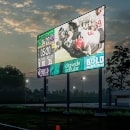About LEDs
As the age of incandescent light bulbs draws to a close, you may still be looking for the best replacement. A good-quality LED does far more than incandescent bulbs ever did, and technology has dramatically enhanced the lights since they first came onto the market.
What Makes an LED
LED is an acronym for “light-emitting diode.” These lights are considered a type of solid state lighting, or SSL, because they use diodes instead of the gases, filaments, or plasma associated with other types of lighting. Types of SSL lighting also include organic light-emitting diodes and light-emitting polymers.
Benefits of LED
You may have become interested in LEDs because you’ve heard they’re considered energy-efficient. These energy savings come from several aspects of the lights.
First, LEDs only emit light in the direction towards which the diodes are turned. This results in a much cleaner, brighter light because there is no need for the diffusers and reflectors used in other types of light.
The light produced by these other types of lights goes everywhere, and tends to put out plenty of heat. This heat helped incandescent bulbs to light, but meant almost all, about 90% according to Energy Star, of the energy created went unused.
LEDs also are easier to maintain and are less temperamental than other types of lighting. For example, they don’t have balances that need to be changed out as fluorescents do, and there are no bulbs to break. They also tend to operate well even in very cold temperatures.
If you are concerned about infrared or ultraviolet emissions, you don’t need to be worry about those with LEDs. They produce neither.

The Life Expectancy of LEDs
Possibly the best benefit of LEDs is the product lifetime. Unlike other types of lights, LEDs do not burn out or just suddenly stop working. Instead, the light produced fades over time and/or becomes discolored. This is called lumen depreciation. Generally, the higher quality the LED, the longer a lifespan you should receive from it.
The US Department of Energy says, “Good-quality white LEDs in well-designed fixtures are expected to have a useful life of 30,000 to 50,000 hours or even longer. A typical incandescent lamp lasts about 1,000 hours; a comparable CFL lasts 8,000 to 10,000 hours, and the best linear fluorescent lamps can last more than 30,000 hours.” Those hours are considered the hours before lumen depreciation begins.
Colors Available
The colors in your LED may change based on its purpose. For example, there are no LEDs that naturally produce white light. This means the light you buy for use in your home, retail space, or office building is one of three types:
- A mixture of different-colored LEDs, called an RGB system
- LEDs that are covered by a specific type of phosphor that converts the color of the light
- A hybrid system that uses both a mixture of colors with a phosphor for converting the color
LEDs are also mixed to create more complex items such as digital displays of varying sizes. However, if you are interested in signs or lights such as directionals, tickers, or LED video scoreboards, LEDs work especially well. These simple items use LEDs made of one color, most often amber, red, green, or blue.
Applications
LEDs do far more than give you light where you are working or living. In fact, different LEDs are available for use in almost every type of lighting situation. They:
- Illuminate billboards and other out-of-home advertisements
- Are used in displays for everything from scoreboards to TV screens
- Provide visibility in parking lots and roadways
You have many choices when it comes to selecting LEDs. Initially, consumers didn’t like LEDs because the lights didn’t look like traditional bulbs. That’s changed, however, as engineers have developed new technologies. Now your options include very traditional options, including ones that look like the old incandescent bulbs.
Growth of LEDs
Though LEDs are radically different from the types of lights we are accustomed to, many people have chosen to adopt this relatively new type of lighting. The Department of Energy, especially, is supportive of research and development regarding LED technologies, so you can expect to continue to see improvements.










